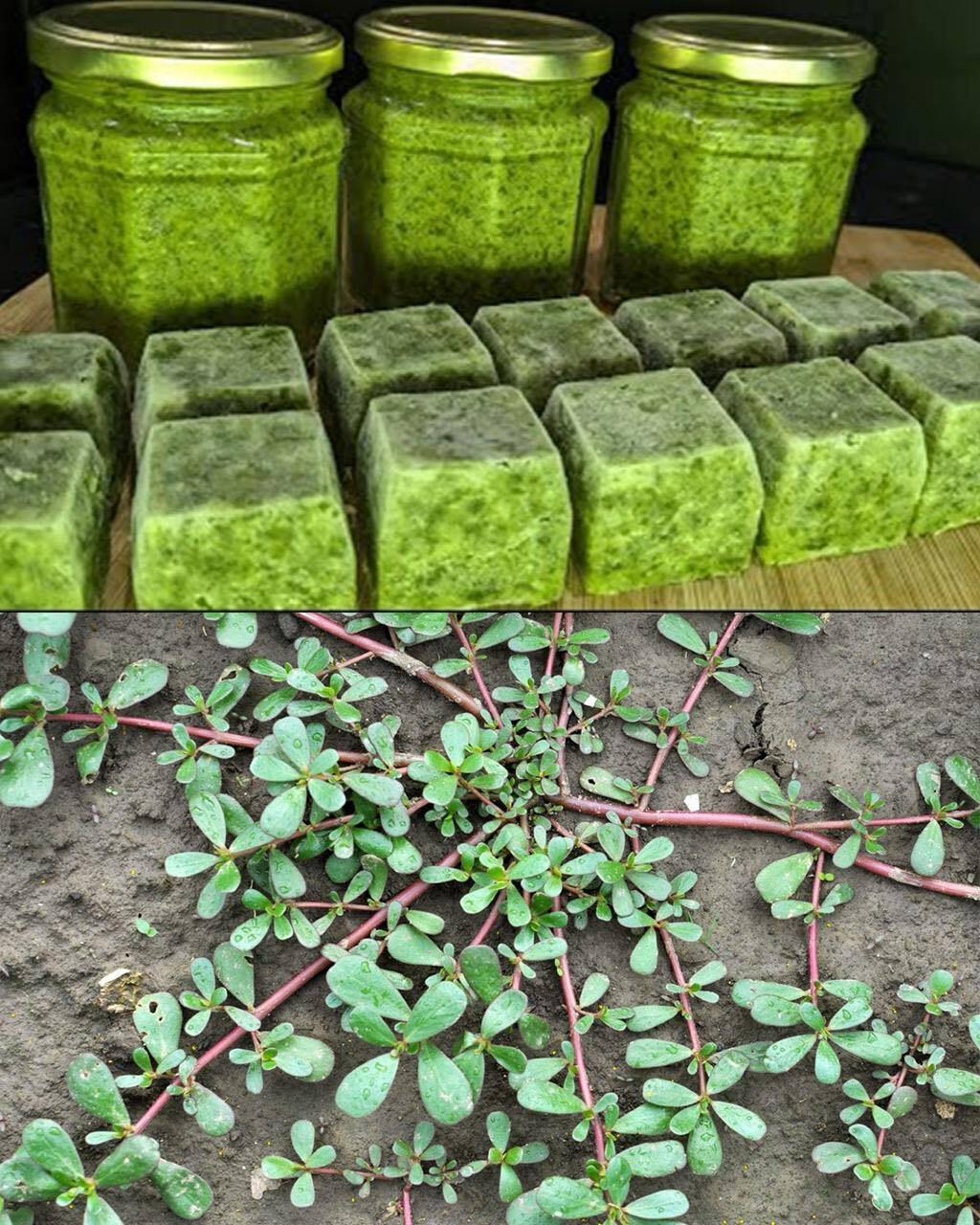What Happens to Your Body When You Eat Purslane Every Day and Especially After 60

It might look like just another weed pushing its way through cracks in sidewalks or sprouting in the corners of garden beds, but purslane is anything but ordinary. Often dismissed as an unwanted intruder and yanked from the soil without a second thought, this humble plant has quietly earned a place among nature’s most underrated superfoods. With a history stretching back thousands of years, purslane has been valued not only for its culinary uses but also for its role in traditional medicine across many cultures.
Known scientifically as Portulaca oleracea, purslane is a low-growing succulent with smooth, reddish stems and small, fleshy green leaves. While it may appear modest, its nutritional profile is remarkable. Packed with omega-3 fatty acids, powerful antioxidants, and a broad spectrum of essential vitamins and minerals, purslane delivers these benefits in a surprisingly low-calorie package. For anyone looking to support heart health, sharpen cognitive function, and improve overall vitality, this unassuming green is worth far more than a passing glance.
One of purslane’s most impressive attributes is its extraordinarily high content of alpha-linolenic acid (ALA), a plant-based omega-3 fatty acid. In fact, it is considered one of the richest vegetable sources of ALA available. These healthy fats play a crucial role in reducing inflammation, supporting cardiovascular health, and promoting optimal brain performance. Studies have linked ALA to a lower risk of heart disease, improved mood, and even enhanced memory retention, making purslane a valuable addition to a balanced diet.
Beyond its omega-3s, purslane offers an impressive lineup of vitamins and minerals. It is rich in vitamins A, C, and E—three antioxidants that work in harmony to strengthen the immune system, protect cells from oxidative stress, and support healthy skin and vision. Minerals like magnesium, potassium, and iron help regulate blood pressure, maintain strong bones, and ensure healthy oxygen circulation throughout the body. Together, these nutrients form a powerful shield against many of the health challenges associated with aging.
For people over 60, the benefits of purslane become especially meaningful. As we grow older, chronic inflammation tends to rise, energy levels can wane, and the body’s ability to absorb key nutrients often diminishes. Introducing anti-inflammatory, nutrient-dense foods like purslane into the diet can help counter these effects naturally, offering support for joint comfort, heart function, and overall resilience.
Culinarily, purslane is just as appealing as it is nutritious. Its mild, lemony flavor and tender-yet-crunchy texture make it incredibly versatile. It can be tossed raw into fresh salads for a citrusy lift, added to soups for a subtle tang, or lightly sautéed and used as a side dish. In Mediterranean, Middle Eastern, and Mexican kitchens, purslane has been a beloved ingredient for generations—blended into yogurt dips, folded into omelets, or cooked with tomatoes and onions for a simple yet flavorful meal.
What’s most striking is that such a valuable plant often goes unnoticed, mistaken for an invasive weed and discarded without a second thought. Yet purslane proves that sometimes the most overlooked gifts from nature are the ones that can offer the greatest rewards. From supporting heart health and mental clarity to enhancing everyday meals, it’s a reminder that wellness can often be found in the simplest places—sometimes right under our feet.
So the next time you spot purslane growing in your garden or peeking through a crack in the pavement, pause before pulling it up. You may be looking at one of nature’s most accessible, affordable, and powerful remedies—a humble plant with the potential to nourish your body, brighten your plate, and connect you to a long tradition of health and healing.
